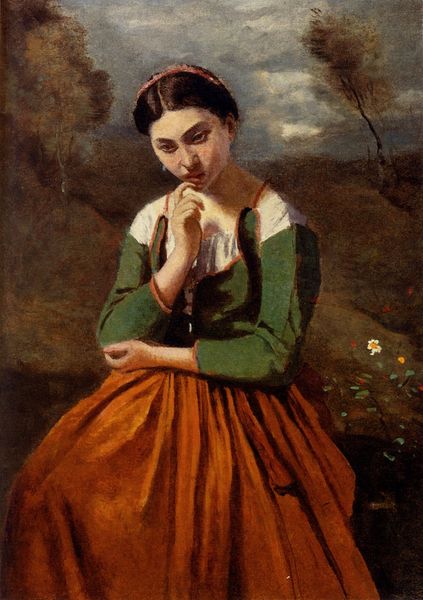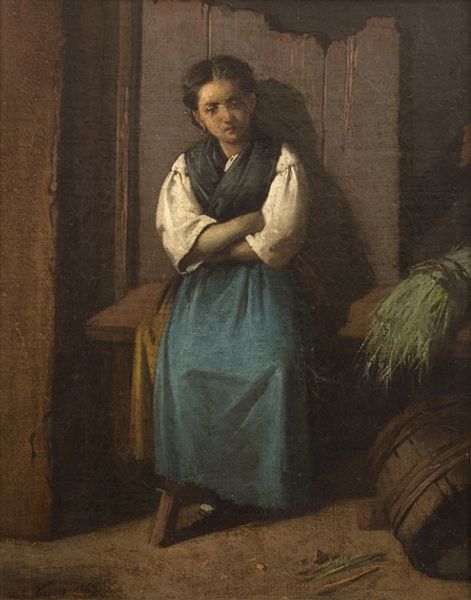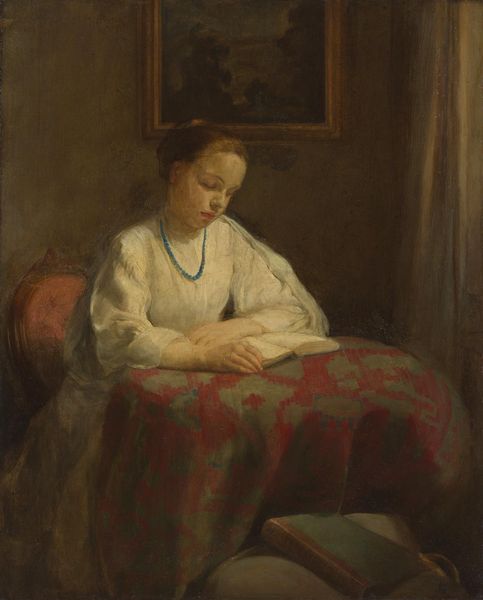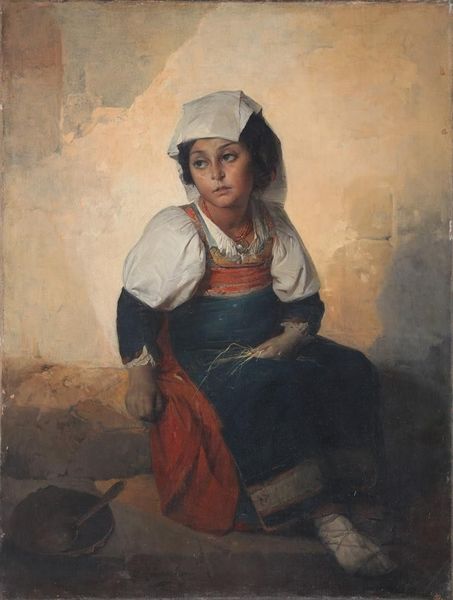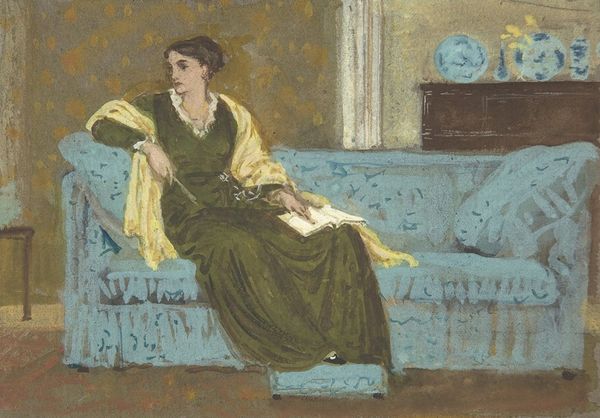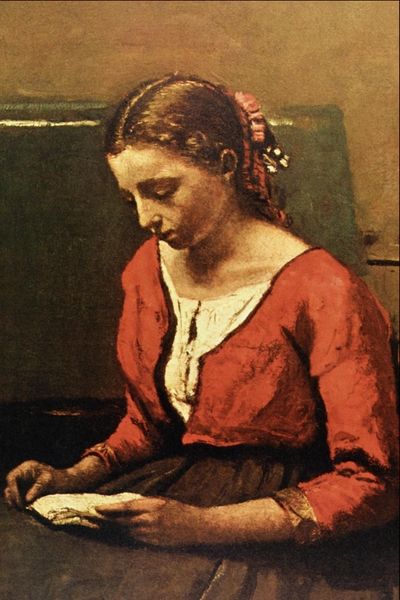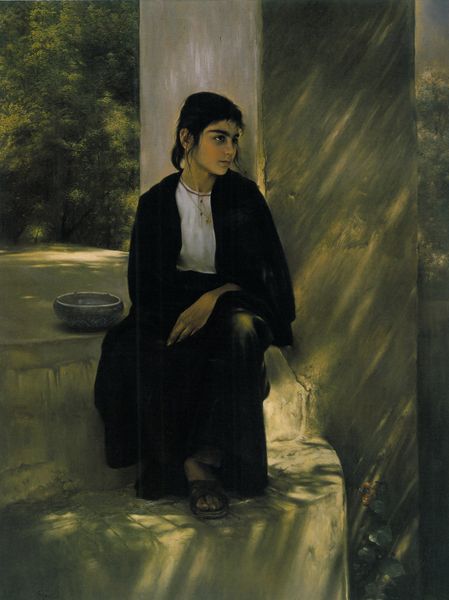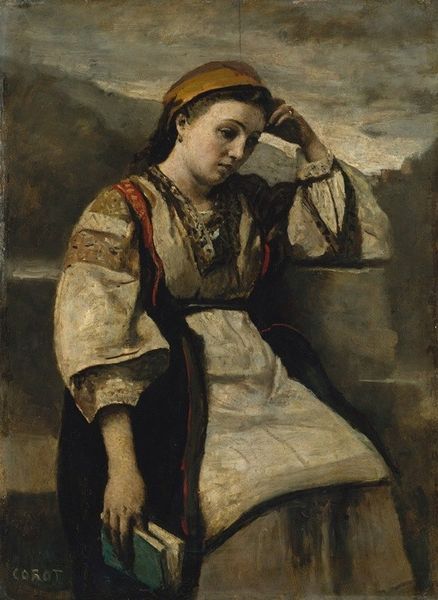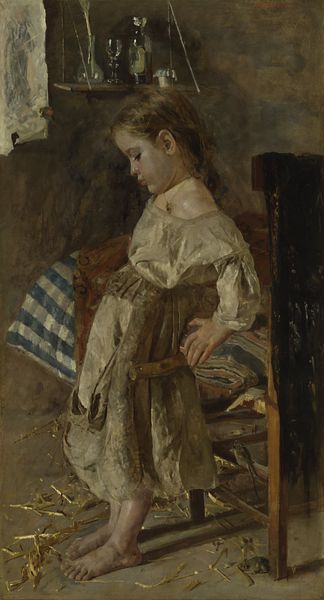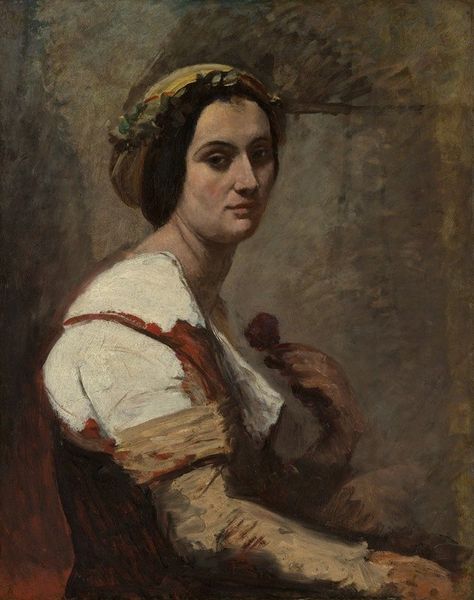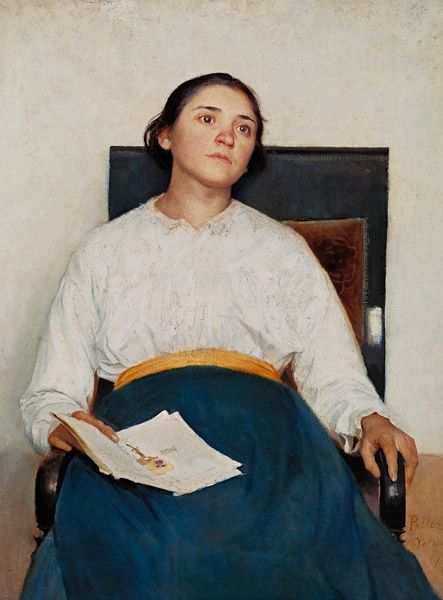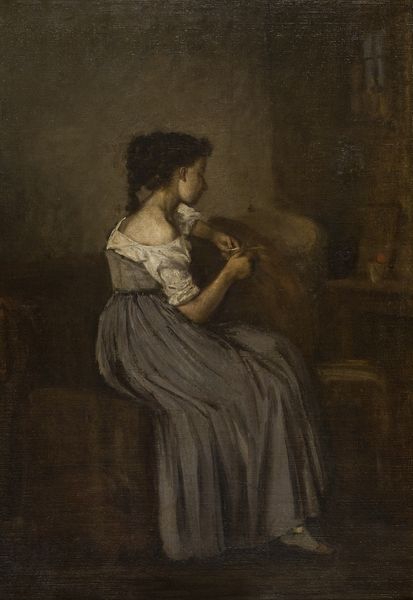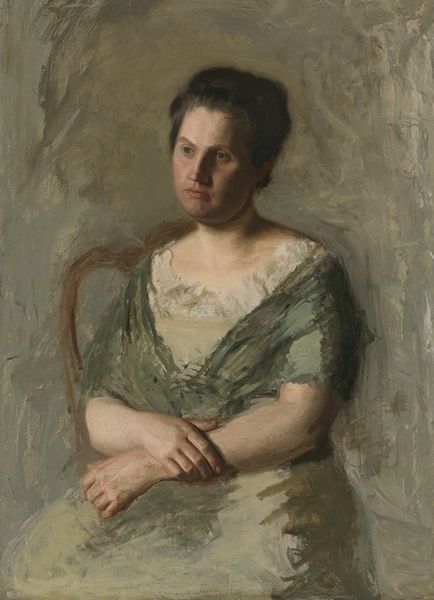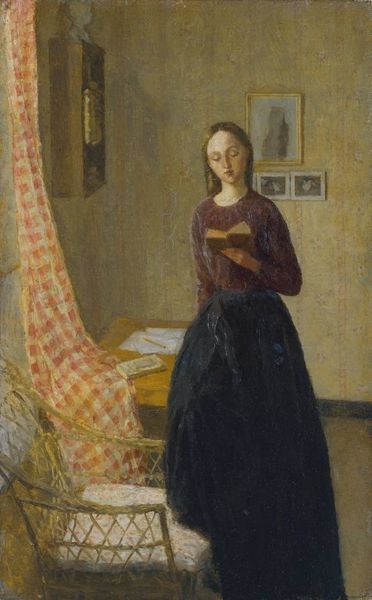
painting, oil-paint
#
portrait
#
figurative
#
painting
#
oil-paint
#
figuration
#
oil painting
#
romanticism
#
genre-painting
#
portrait art
Copyright: Public Domain: Artvee
Curator: Here we have Camille Corot's "Melancholy Italian Woman," an oil on canvas completed between 1826 and 1827. Editor: The melancholy is palpable. She seems burdened by something unseen, almost as if she is reflecting the weight of unseen burdens that are embedded within a societal structure. Curator: Indeed. It is striking how Corot conveys that emotion. The coral necklace seems almost a symbolic adornment, not joyous but something more ancient, a remnant of tradition perhaps. Coral’s ties to protection… could it symbolize resilience in the face of sorrow? Editor: I'm drawn to how her simple white blouse contrasts with the deep, earthy tones of her skirt and the room's minimal furnishings. This visual starkness can suggest a social and economic divide, maybe highlighting the limitations placed upon women, especially of a certain class, during that era. The simplicity can hide oppression. Curator: That's a fascinating reading. I also think about the composition. Her gaze is directed away from us, drawing us into her private world. The soft light on her face gives her an almost iconic quality, reminiscent of devotional images. The psychological depth creates space for her inner narrative. Editor: Exactly. We could look into what Corot intended the setting to symbolize, however it can never be fully determined. And the truth is this woman may also be acting out a narrative for a particular patron's pleasure. Regardless, that weight that the painting brings across becomes part of a larger narrative of social inequalities. Her melancholy is not merely personal; it is contextualized. Curator: So, while "Melancholy Italian Woman" invites us into a singular moment of introspection, your reading reveals how Corot has captured both individual emotion and subtle undercurrents within a larger cultural landscape. Editor: It makes us think about whose stories are told, whose feelings are documented, and within which frame. The gaze directed from within the picture forces our view beyond an individual, to contemplate an existence bounded in both its beauty and oppression.
Comments
No comments
Be the first to comment and join the conversation on the ultimate creative platform.
